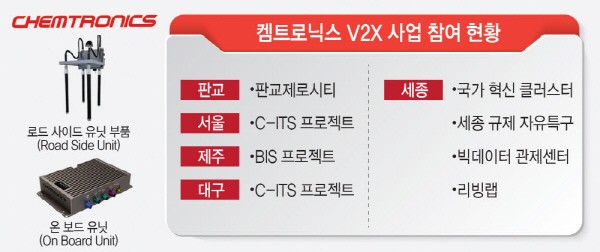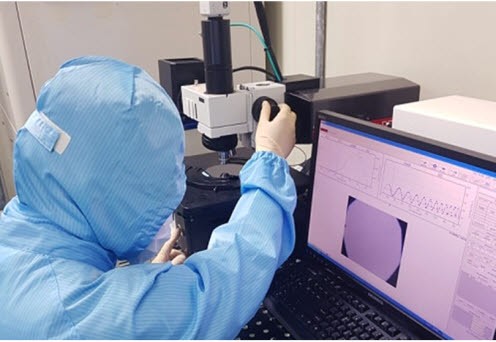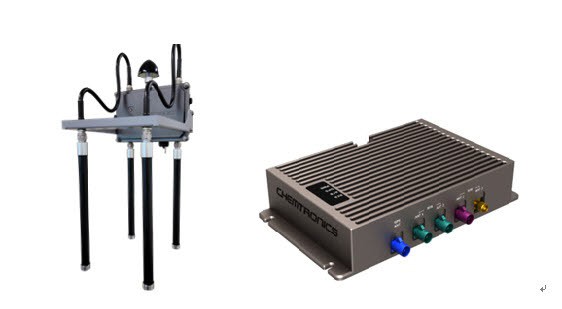

Chemtronics will mass-produce V2X products that can simultaneously support Wireless Access for Vehicular Environments (WAVE) and Cellular-Vehicle to Everything (C-V2X), which are the global Vehicle to Everything (V2X) communications standards. Chemtronics (CEO Bo-kyun Kim and Eung-soo Kim) announced on the 21st that they will supply V2X products to the next-generation Cooperative Intelligent Transport Systems (C-ITS) project on the Gyeongbu Line and Seoul Metropolitan Areas (815km), which was ordered by the Korea Express Corporation and contracted to SKT Consortium in December last year. The company puts WAVE installation as a priority.
Chemtronics products fulfills various communication standards in one product according to market needs. Existing V2X communication products only support either WAVE or C-V2X. Chemtronics products can lower supply costs by increasing communication compatibility.
Rapid growth is expected thanks to the expanding construction of autonomous driving infrastructure in Korea and abroad. South Korea will select a V2X communication method starting from the end of next year to the beginning of 2024. Europe is building V2X infrastructure using the same ITS-G5 communication method as WAVE. China is building a C-V2X method. In Europe and China, the New Car Assessment Program (NCAP) decided to give high safety scores to vehicles equipped with V2X from 2025 and 2024, respectively. Major global automakers are also being equipped with V2X terminals.
The government announced a "future automobile industry development strategy" in order to successfully commercialize Level 4 self-driving cars in a timely manner. By next year, WAVE and C-V2X-based roadside base stations (RSUs) will be installed in the 2300km section of the highway. In 2024, there are plans to select a single communication standard for nationwide expansion.
Chemtronics has developed various V2X products such as WAVE, C-V2X, WAVE+LTE/5G, and C-V2X+LTE/5G to actively respond to government policies as well as market requirements. They have secured a foundation to respond to domestic, as well as overseas markets such as Europe, the U.S., and China, which utilize different communication methods.

Chemtronics developed a Dual Active Stack in 2020 that can support both WAVE and C-V2X, the first in Korea, and delivered it to the C-ITS project in Seoul. It also won an order supply V2X products to Saemangeum's self-driving Commercial Vehicle test bed business. Eung-soo Kim, CEO of Chemtronics, said, "The company plans to continuously develop and invest in technologies to respond to the government's V2X distribution policy and stably expand the commercialization of self-driving cars," and "We will do our best to further expand the domestic and overseas V2X infrastructure market and On-board Unit (OBU) business based on the infrastructure construction contracts we have won."

[Table] Chemtronic's V2X business participation

By Satff Reporter Sora Park (srpark@etnews.com)